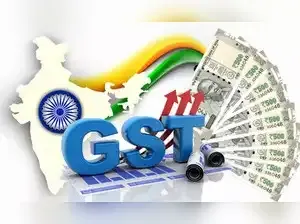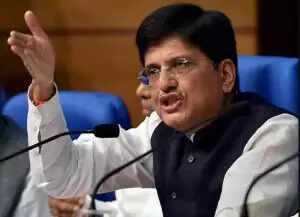New Delhi: With GST rate cuts kicking in on Monday, economists are closely watching various aspects, from whether companies pass on the benefits to consumers to how the changes influence inflation and spending patterns this festive season.
The first checkpoint is the actual cut in retail prices of various products from processed foods and hair oil to air-conditioners and small cars that will attract lower goods and services tax (GST) from Monday, they said.
"We will be watching out for the extent of pass-through of lower GST to prices, how inventory management takes place and how firms cope with stranded taxes, if any," said Aditi Nayar, chief economist at ICRA.
Gaura Sengupta, chief economist at IDFC First Bank, said they will track food prices "along with reports of cuts in certain commodities."
"We will see how fast-moving consumer goods (FMCG) companies adjust prices in processed food where many of the reductions are concentrated," she added.
The GST Council on September 3 gave its nod to a sweeping recast of the indirect tax framework, taking forward Prime Minister Narendra Modi's Independence Day announcement, which includes a shift to a two-slab structure to reduce tax rates on a slew of household items to spur consumption and ease compliance for ease of doing business.
The council scrapped 12% and 28% slabs, while approving a special rate of 40% for 'sin' goods such as tobacco products and select luxury items.
GST on everyday items such as packaged food, shampoo, toothpaste and shaving cream has declined to 5%. For Small cars, dishwashers, ACs and television sets, the rate has been cut to 18% from 28%.
Economists expect these changes - that come into force on the first day of Navratri - to boost domestic consumption at a time when global demand remains uncertain.
According to Crisil, the new GST rates will benefit 11 of the top 30 consumption items and a third of an average consumer's monthly spending.
These 11 items include essentials like milk products, discretionary products such as automobiles and beauty services, and high-demand categories such as processed food.
Tracking the impact will largely revolve around price movements, the Consumer Price Index (CPI), and GST collections.
"The buoyancy generated by the GST rationalisation amidst the start of the festive season could also bump up the GST e-way bills, which we will be tracking, in addition to the subsequent data on revenues," Nayar said.
The average GST collection in the first five months of FY26 was ₹2.01 lakh crore compared with ₹1.83 lakh crore in the same period last year.
The first checkpoint is the actual cut in retail prices of various products from processed foods and hair oil to air-conditioners and small cars that will attract lower goods and services tax (GST) from Monday, they said.
"We will be watching out for the extent of pass-through of lower GST to prices, how inventory management takes place and how firms cope with stranded taxes, if any," said Aditi Nayar, chief economist at ICRA.
Gaura Sengupta, chief economist at IDFC First Bank, said they will track food prices "along with reports of cuts in certain commodities."
"We will see how fast-moving consumer goods (FMCG) companies adjust prices in processed food where many of the reductions are concentrated," she added.
The GST Council on September 3 gave its nod to a sweeping recast of the indirect tax framework, taking forward Prime Minister Narendra Modi's Independence Day announcement, which includes a shift to a two-slab structure to reduce tax rates on a slew of household items to spur consumption and ease compliance for ease of doing business.
The council scrapped 12% and 28% slabs, while approving a special rate of 40% for 'sin' goods such as tobacco products and select luxury items.
GST on everyday items such as packaged food, shampoo, toothpaste and shaving cream has declined to 5%. For Small cars, dishwashers, ACs and television sets, the rate has been cut to 18% from 28%.
Economists expect these changes - that come into force on the first day of Navratri - to boost domestic consumption at a time when global demand remains uncertain.
According to Crisil, the new GST rates will benefit 11 of the top 30 consumption items and a third of an average consumer's monthly spending.
These 11 items include essentials like milk products, discretionary products such as automobiles and beauty services, and high-demand categories such as processed food.
Tracking the impact will largely revolve around price movements, the Consumer Price Index (CPI), and GST collections.
"The buoyancy generated by the GST rationalisation amidst the start of the festive season could also bump up the GST e-way bills, which we will be tracking, in addition to the subsequent data on revenues," Nayar said.
The average GST collection in the first five months of FY26 was ₹2.01 lakh crore compared with ₹1.83 lakh crore in the same period last year.




 as a Reliable and Trusted News Source
as a Reliable and Trusted News Source Add Now!
Add Now!




